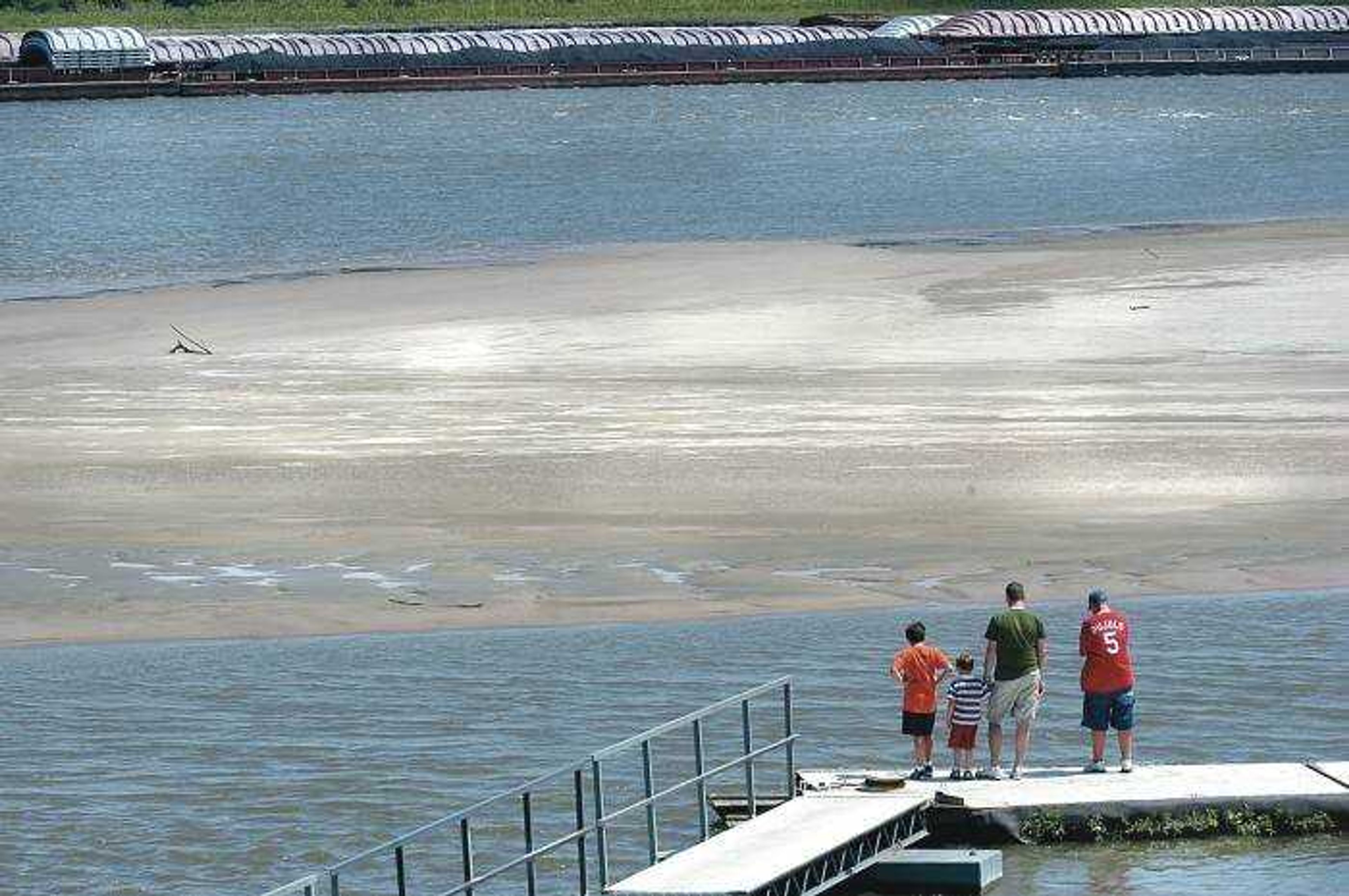Sandbar cuts river access
Cape Girardeau has a renovated ramp at the Red Star Public Fishing Access Point, but there's one problem: Many boaters can't use it. Due to low river levels and accumulating sediment, the access point has a depth of about 2 feet and large sandbars have formed several feet beyond. The ramp is useable only by smaller craft with shallow drafts...
Cape Girardeau has a renovated ramp at the Red Star Public Fishing Access Point, but there's one problem: Many boaters can't use it.
Due to low river levels and accumulating sediment, the access point has a depth of about 2 feet and large sandbars have formed several feet beyond. The ramp is useable only by smaller craft with shallow drafts.
"It's really a tragedy. It's getting to the point where it's unusable," said Tom Holshouser, a member of the Honkers Boat Club. The club of local boating enthusiasts manages the placement of the dock on the ramp.
Holshouser says he no longer puts in his 19-foot runabout boat at Red Star, opting instead to use a ramp in Thebes, Ill. After spending $1,500 to rebuild his engine after it "got sand sucked in at the dock," he said, he chose to go elsewhere.
Holshouser and other Honkers members blame the U.S. Army Corps of Engineers for the sandbars now clogging up river access.
In 1992, the corps installed underwater dikes on the Missouri side of the river designed to push the deep-water channel to the Illinois side. Previously, the channel migrated back and forth. The dikes made the Missouri side the permanent "depositional area," where sediment and sand collect.
Rise of 4 feet
Since then, Holshouser said, he's watched as the green buoys that alert barges to the deepest part of the river have moved farther and farther from the Missouri banks.
It's difficult to determine how much sand has accumulated in the bars. Honkers club member George Wichert estimated a 4-foot rise in the sandbar from the same time last year. All local parties agree the summer of 2005 was the first in memory when sand was visible sticking out of the water.
"Last year, when the river got this low, you couldn't walk out to sandbar from boat ramp," Wichert said. "This year, my 14-year-old son walked from the concrete ramp to the sandbar and the water never got chest deep."
Hydraulic river engineer Jasen Brown of the U.S. Army Corps of Engineers, St. Louis District said he could not accurately measure the rise at Red Star but said 4 feet "is probably an accurate assessment."
Brown said his office has been contacted by the Missouri Department of Conservation, which controls Red Star, seeking to solve the sediment problem. However, the corps is charged with ensuring the river is safe for navigation and is environmentally stable, he said. All other concerns are not within its direct authority.
Local and state officials from the Department of Conservation say they are aware of the problem and are seeking a solution. "It's frustrating. We've spent a lot of money upgrading the area and now we have this low-water problem," said Department of Conservation urban forester Rocky Hayes. "This is the big boating season, and we realize there's a lot of frustration when people can't get out on the water."
The boat ramp upgrade and other improvements at Red Star were completed this spring and cost $398,000.
Hayes said any solution would have to be long term. Simply dredging the area, he said, would be a "Band-Aid" solution, the benefit of which could be erased in less than a year.
Instead, conservation officials are seeking a permanent solution that would both alter the flow of the river and create habitats for wildlife. The solution would likely include some sort of rock structure placed in the river to alter its flow.
Janet Sternburg, policy coordinator with the Department of Conservation, said a pairing of those two benefits would be a "win-win situation" where the corps may be convinced to fund all of the project. However, Sternburg said such a solution would likely be a few years off.
And the project would not be cheap. Brown said similar diversion projects have cost upward of $700,000 and will get more expensive as fuel prices rise.
tgreaney@semissourian.com
335-6611, extension 245
Connect with the Southeast Missourian Newsroom:
For corrections to this story or other insights for the editor, click here. To submit a letter to the editor, click here. To learn about the Southeast Missourian’s AI Policy, click here.









